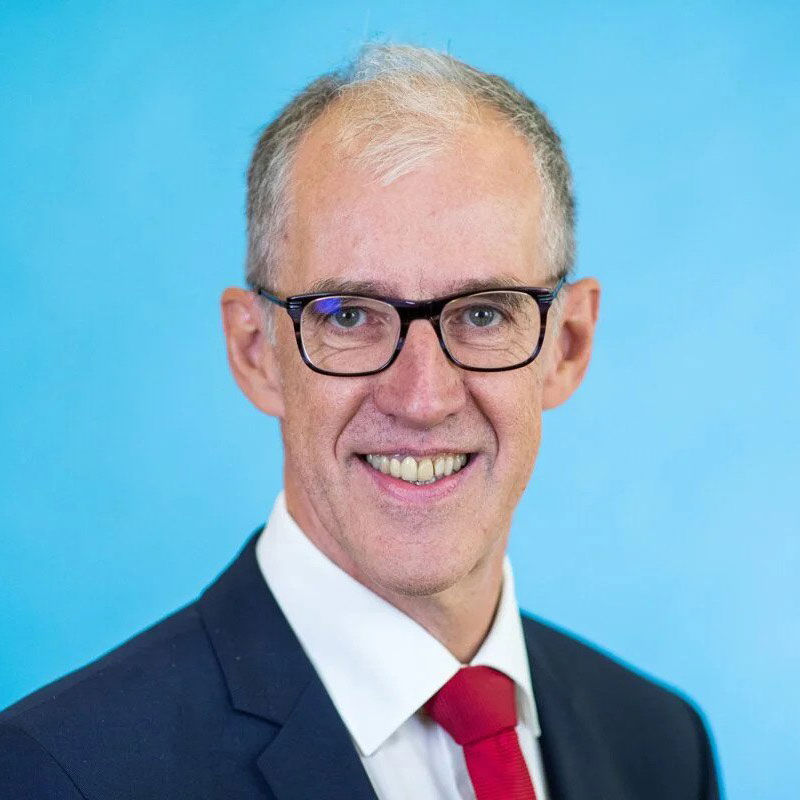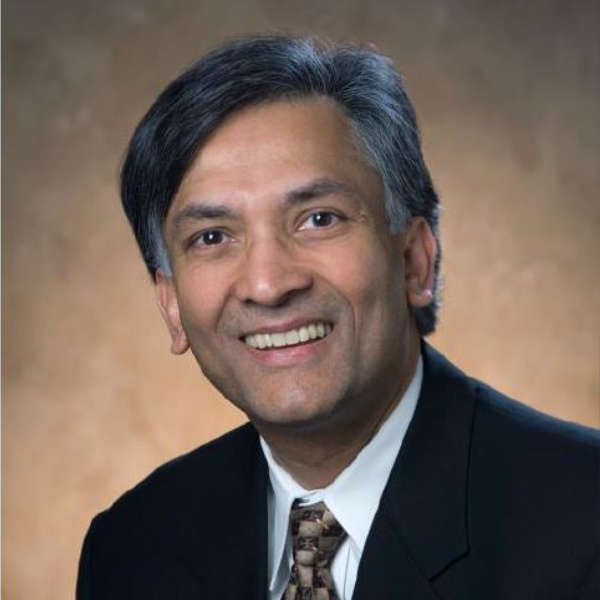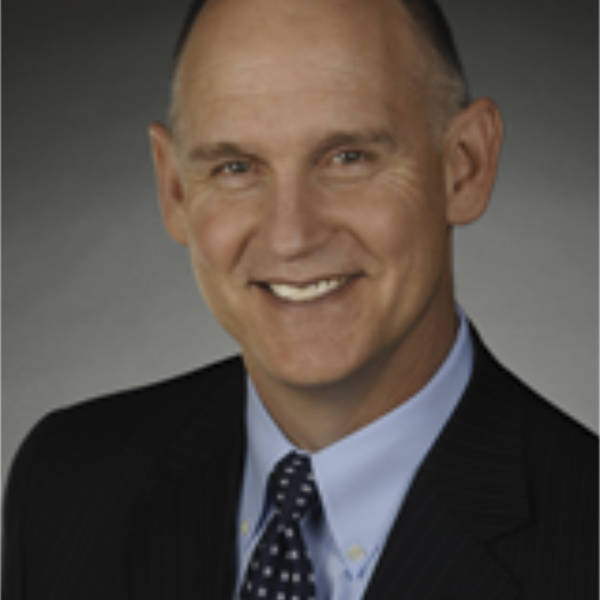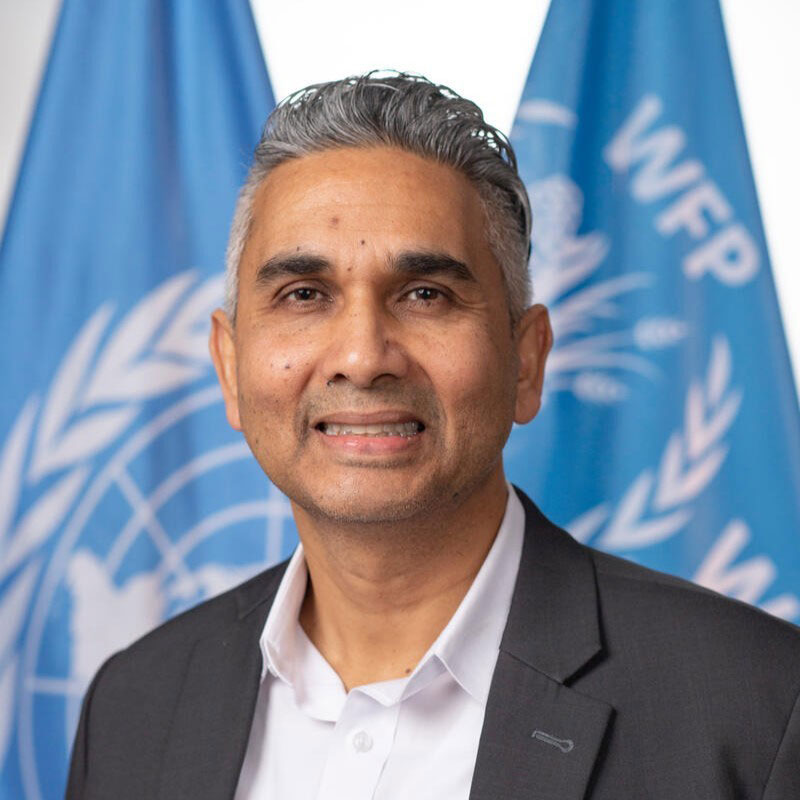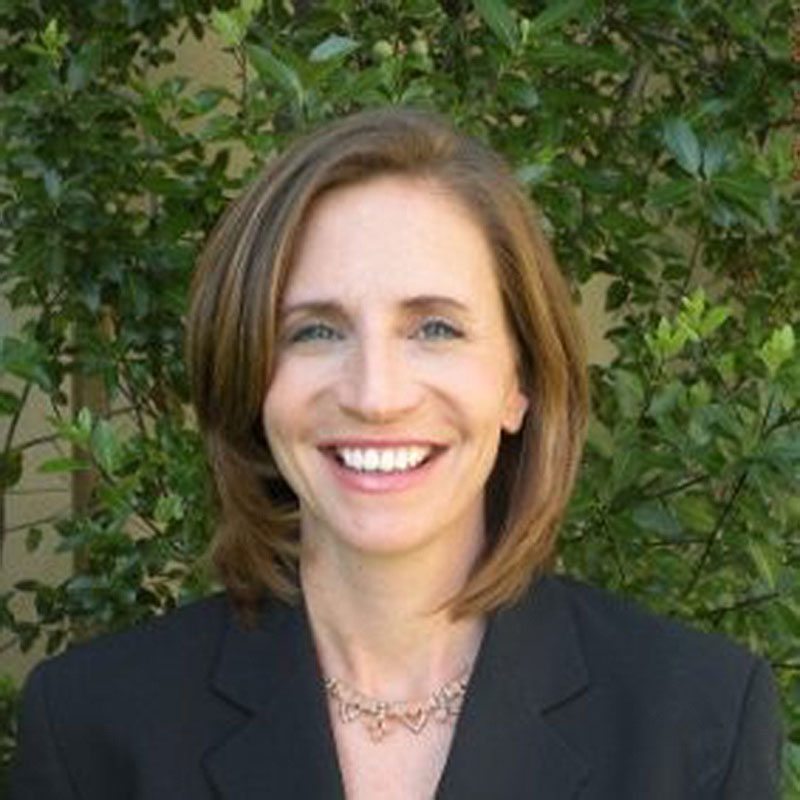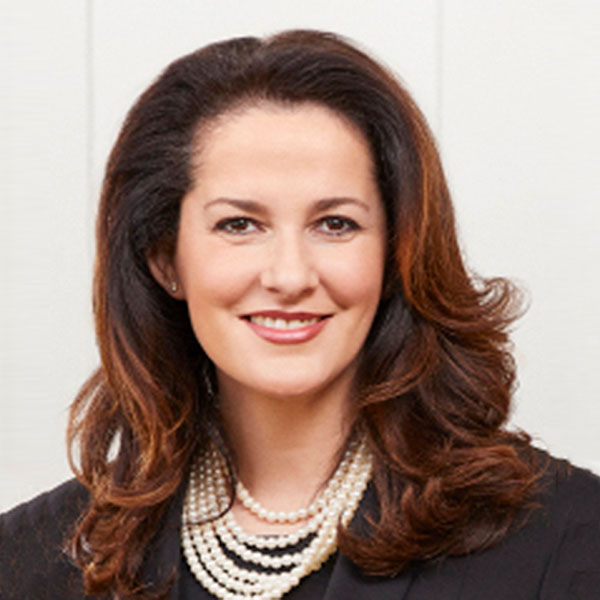As we all know, the world faces a severe crisis today. Hunger is soaring, resources are running low, and millions will lose vital food rations if we don’t have the means to feed those in greatest need As we all know, the world faces a severe crisis today. Hunger is soaring, resources are running low, and millions will lose vital food rations if we don’t have the means to feed those in greatest need.
We cannot overcome these challenges without innovation and technology. Smart ideas and creative thinking at scale are in WFP’s DNA, but we also need new ways to streamline our operations and stretch our resources further.
The exponential growth of technology in recent years has introduced new possibilities that can revolutionize the way we tackle these global issues. By identifying, supporting and scaling high-impact innovations, and by harnessing the potential of cutting-edge digital solutions, we can unlock new avenues to streamline logistics, enhance distribution networks, and maximize the efficiency of resource allocation.
In a world where more and more people face dangerous food insecurity, WFP must stand resolute in its commitment to scaling innovation. This website explores in greater depth the various ways in which WFP is building, and can build on, our strong innovation culture in order to end hunger and save lives.
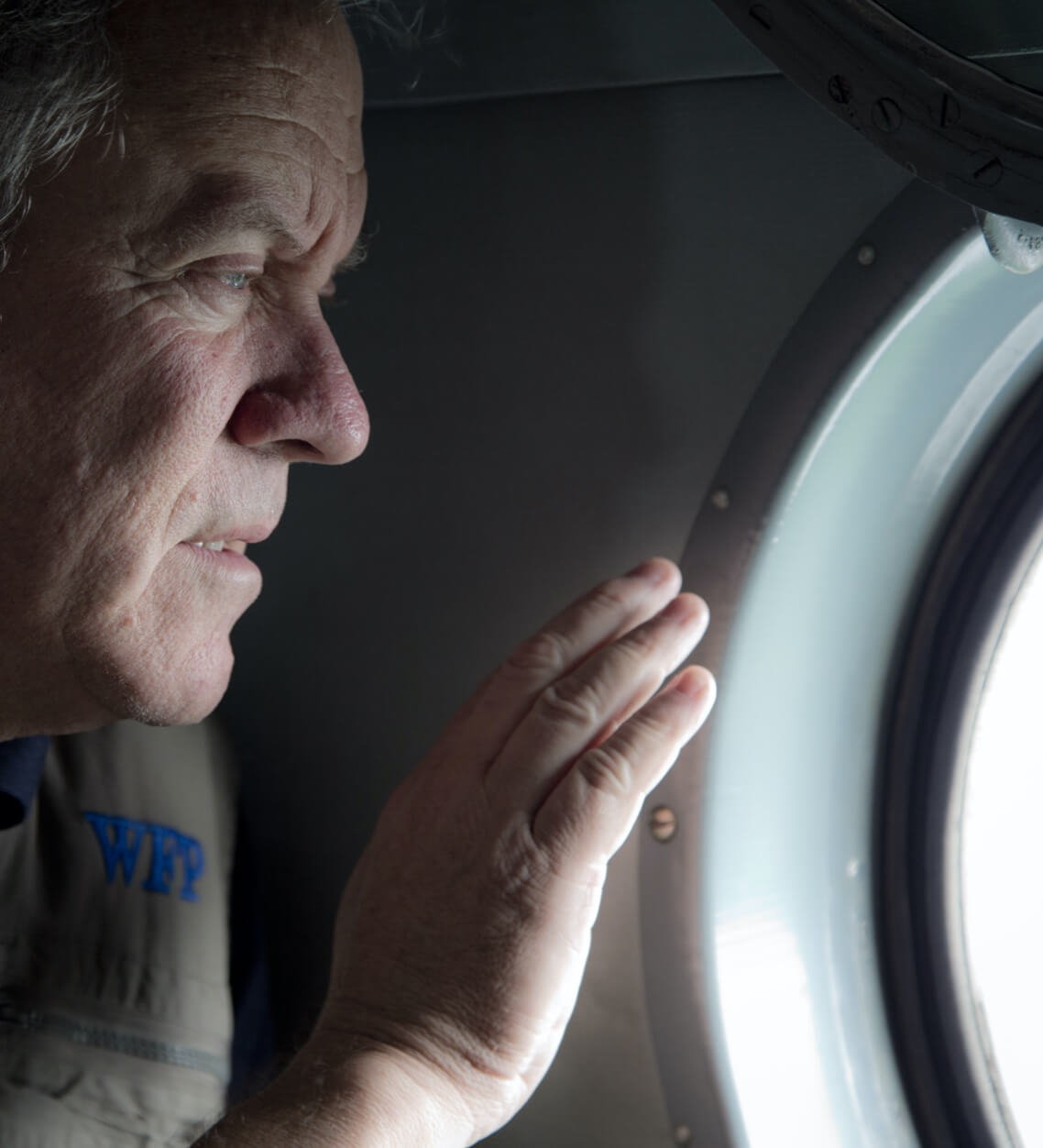
This platform showcases WFP’s cutting-edge projects and the innovative ways that companies, entrepreneurs, and individuals can work with us so that, together, we achieve even more.
It is nearly 60 years since WFP started delivering food to vulnerable communities threatened by natural disasters and war. Since then, we have embraced innovation and technology to forge closer relationships with the people we serve, helping them to decide what they need and pushing ourselves to be even better.
We have harnessed the extraordinary benefits of mobile technology, artificial intelligence, responsible data management, and secure digital finance to support people in crisis. This is why, for example, we developed WFP’s Farm2Go app, which connects thousands of farmers in Kenya and Rwanda with training and information on weather and local agriculture.
Innovation and digital technology are written into WFP’s corporate DNA - but the speed and scale at which the humanitarian community needs to embrace them must continue to accelerate.
In just the past two years, digital solutions have helped WFP save enough money to provide 73 million more meals. We have achieved these efficiencies with projects such as Building Blocks, a privately managed blockchain network created in 2017, which now helps over a million refugees access monthly cash and food entitlements from a range of different organizations, as well water, hygiene, and sanitation support. But we need to scale up programs like these so the precious resources they release can be ploughed back into food assistance.
The sheer size of WFP’s global footprint allows us to be even more ambitious. When the COVID-19 pandemic struck, WFP launched the Emergency Service Marketplace, using real-time data to deliver medical supply shipments such as ventilators, personal protective equipment, and testing kits to over 100 countries for 72 organizations.
In a world where a few seconds or a mile longer can be the difference between life and death, WFP's commitment to using innovation and technology enables us to move closer to our shared goal of eliminating hunger by 2030. As you explore this site, I hope it will inspire you with ways to help build the better world we all want to see. Let's work together, in partnership, to achieve it.
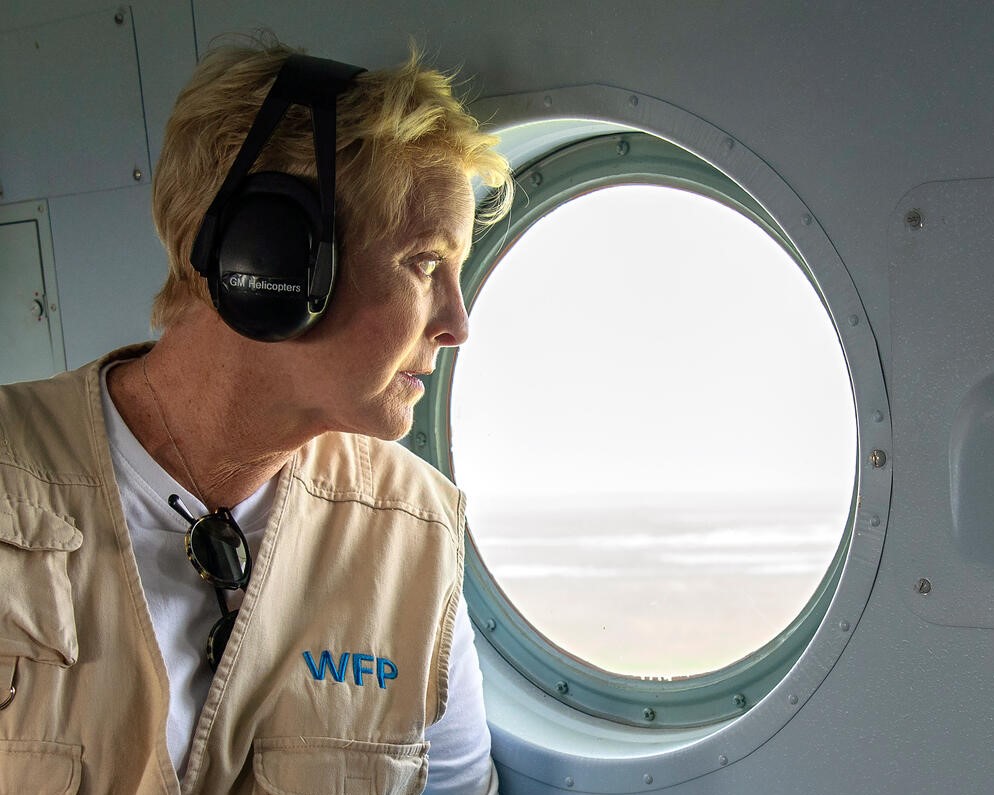
The world is facing a global crisis - hunger is soaring, funding is running dangerously low, and millions are losing access to food because we don’t have the resources to feed everyone in greatest need.
Overcoming these challenges will take innovation and technology. Smart ideas and creative thinking at scale are in WFP’s DNA, but every day there are new advancements that can revolutionize the way we tackle these global issues.
In a world where more and more people face dangerous food insecurity, WFP must stand resolute in its commitment to innovation. By identifying, supporting, and scaling high-impact projects and harnessing the potential of cutting-edge digital solutions, we can unlock new ways to streamline logistics, enhance distribution networks, and maximize the efficiency of resource allocation.
This website explores in greater depth the various ways WFP is building and can build on our strong innovation culture to end hunger and save lives. I hope it can serve as inspiration, guiding you towards ways we can partner and use all of our skills toward our shared goals.
Together, let's unite to create the world we want: the one where no one goes to bed hungry.

This platform showcases WFP’s cutting-edge projects and the innovative ways that companies, entrepreneurs, and individuals can work with us so that, together, we achieve even more.
It is nearly 60 years since WFP started delivering food to vulnerable communities threatened by natural disasters and war. Since then, we have embraced innovation and technology to forge closer relationships with the people we serve, helping them to decide what they need and pushing ourselves to be even better.
We have harnessed the extraordinary benefits of mobile technology, artificial intelligence, responsible data management, and secure digital finance to support people in crisis. This is why, for example, we developed WFP’s Farm2Go app, which connects thousands of farmers in Kenya and Rwanda with training and information on weather and local agriculture.
Innovation and digital technology are written into WFP’s corporate DNA - but the speed and scale at which the humanitarian community needs to embrace them must continue to accelerate.
In just the past two years, digital solutions have helped WFP save enough money to provide 73 million more meals. We have achieved these efficiencies with projects such as Building Blocks, a privately managed blockchain network created in 2017, which now helps over a million refugees access monthly cash and food entitlements from a range of different organizations, as well water, hygiene, and sanitation support. But we need to scale up programs like these so the precious resources they release can be ploughed back into food assistance.
The sheer size of WFP’s global footprint allows us to be even more ambitious. When the COVID-19 pandemic struck, WFP launched the Emergency Service Marketplace, using real-time data to deliver medical supply shipments such as ventilators, personal protective equipment, and testing kits to over 100 countries for 72 organizations.
In a world where a few seconds or a mile longer can be the difference between life and death, WFP's commitment to using innovation and technology enables us to move closer to our shared goal of eliminating hunger by 2030. As you explore this site, I hope it will inspire you with ways to help build the better world we all want to see. Let's work together, in partnership, to achieve it.
Every second counts in the fight against hunger – and WFP and its partners can hear the clock ticking. Doing things better and faster means harnessing new solutions that accelerate decision making and assistance-delivery processes. Time can make the difference between life and death, and we have a responsibility to serve people as fast as we can.
In the aftermath of disasters, it is critical for humanitarian responders to quickly assess the extent of damage and the needs of affected communities. This is where SKAI comes in - an open-sourced tool that uses satellite imagery and artificial intelligence (AI) to automatically evaluate building damage. Developed jointly by Google Research AI and WFP Innovation Accelerator, SKAI is 13 times faster and 77 percent cheaper, reducing assessment time from 3 weeks to 24 hours. In 2023, it proved invaluable in disaster response after an earthquake in Türkiye and Syria; with an accuracy rate of 81 percent, SKAI assessed 600,000 buildings and identified over 28,000 affected structures. SKAI was also deployed after Hurricane Ian by Give Directly (NGO) and by WFP after floods in Pakistan and South Africa in 2022.
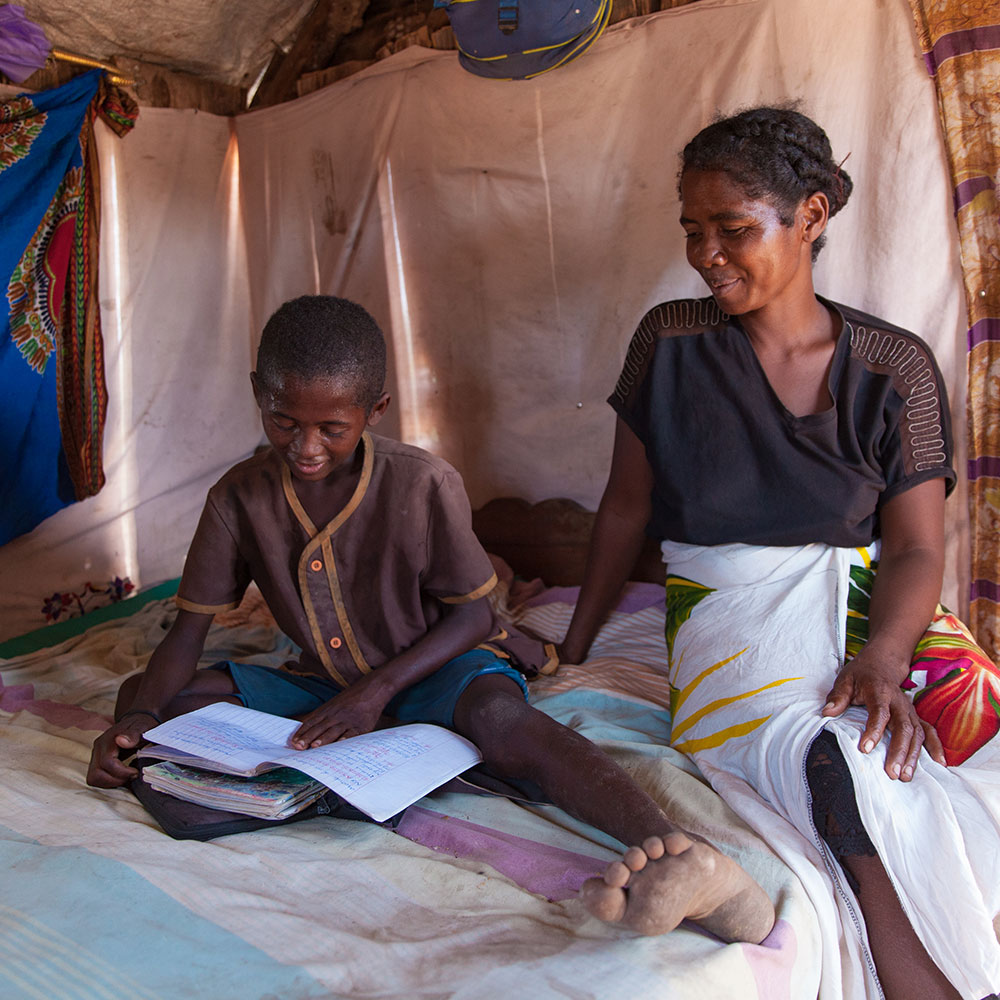
Humanitarian operations face complex challenges each day, from funding shortfalls and access restrictions due to disasters or conflict to sudden-onset emergencies. In these contexts, money saved can mean more lives saved. To address this, WFP developed Optimus, a custom application that uses big data and analytics to help identify the most cost-effective way to assist people in need. By leveraging data sources, such as population size, transportation routes, and nutritional value of food, Optimus provides vital insights regarding ideal food basket design, food sourcing techniques, and distribution networks. WFP has already saved over US$50 million in complex emergency operations like those in Syria, Iraq, and Yemen, meaning that the same budget can now serve more people, stretching donor support even further.
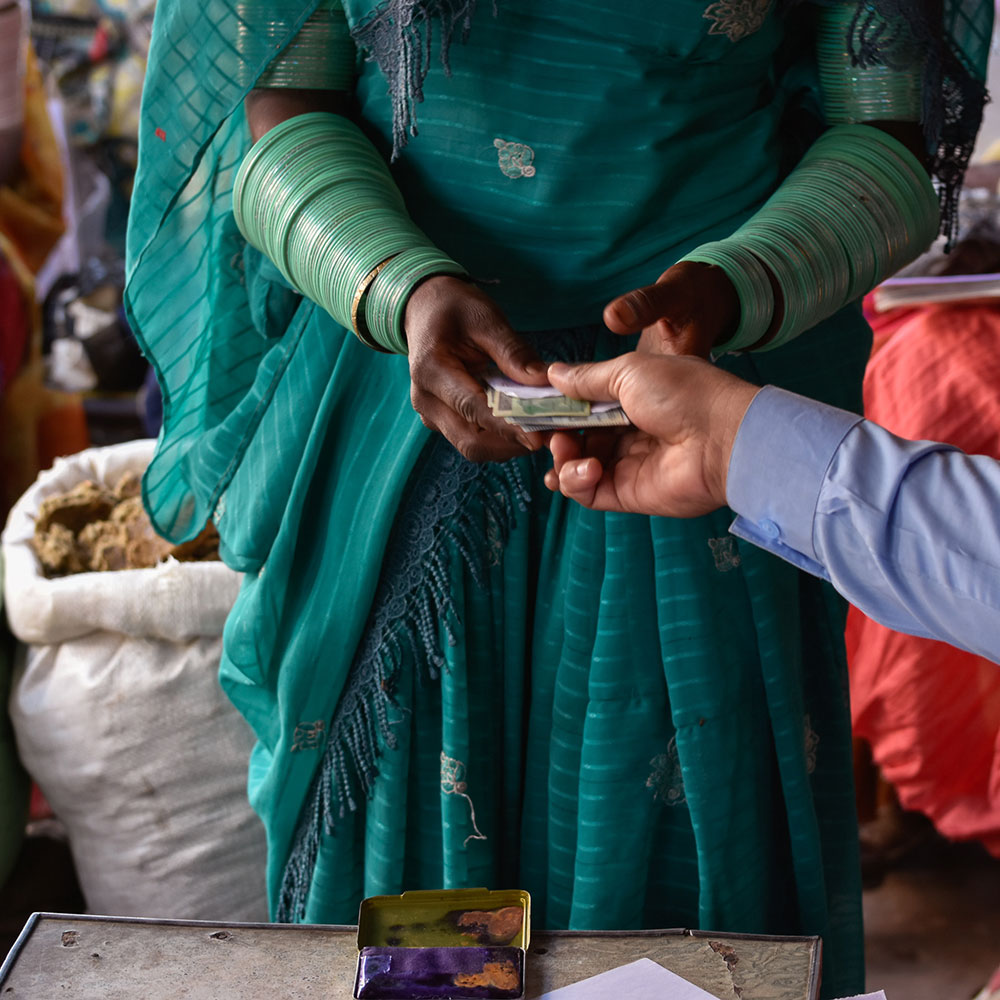
In the wake of disasters and conflict, immediate cash becomes crucial for essentials like food and safe transport. WFP is the largest provider of cash assistance in the humanitarian community, working with financial service providers (FSPs) for cash delivery. However, contracting FSPs is a complex and lengthy process, often limiting WFP Country Offices to a single provider. plugPAY is an innovative digital payment platform that streamlines procedures and cuts down FSP contracting time, enabling a more efficient cash delivery. As a result, recipients can access a range of payment systems, fostering financial inclusion. Since its inception, plugPAY has reached over 125,000 people in Zambia and Sri Lanka, transferring US$4 million and reducing transfer fees by 80 percent.
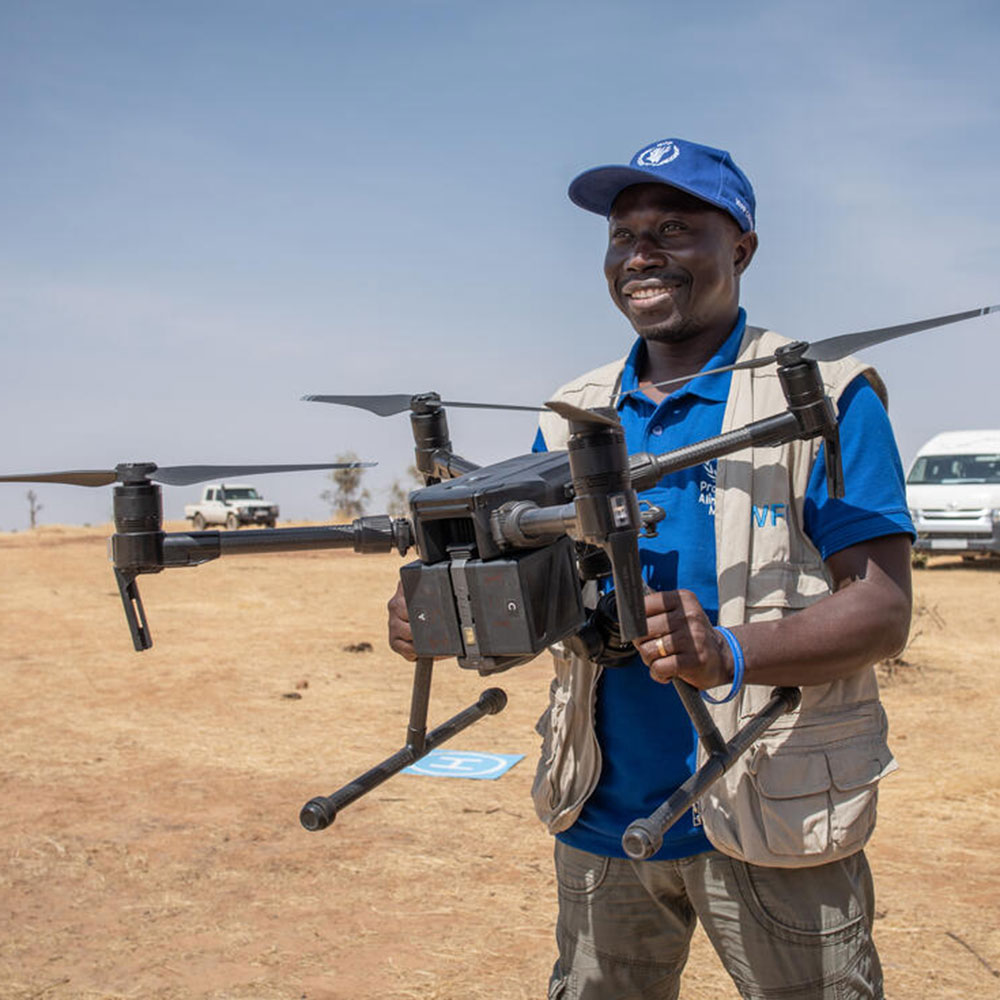
WFP uses a combination of drones and an artificial intelligence tool known as DEEP to cut damage assessment time from weeks to minutes before and after a disaster. With drones, WFP captures aerial imagery of at-risk communities and then analyzes that imagery with artificial intelligence to generate an in-depth view of areas susceptible to damage while also using the same process to identify where support is needed post-disaster. With AI, the entire analysis takes minutes – without it, it would take weeks. Speed translates to many more lives saved in emergencies, where every minute can mean the difference between life and death.
Another emerging use for drones is "WiFi in the sky", which could revolutionize how the internet is delivered in post-disaster settings by fitting drones with communications equipment.
Watch the video
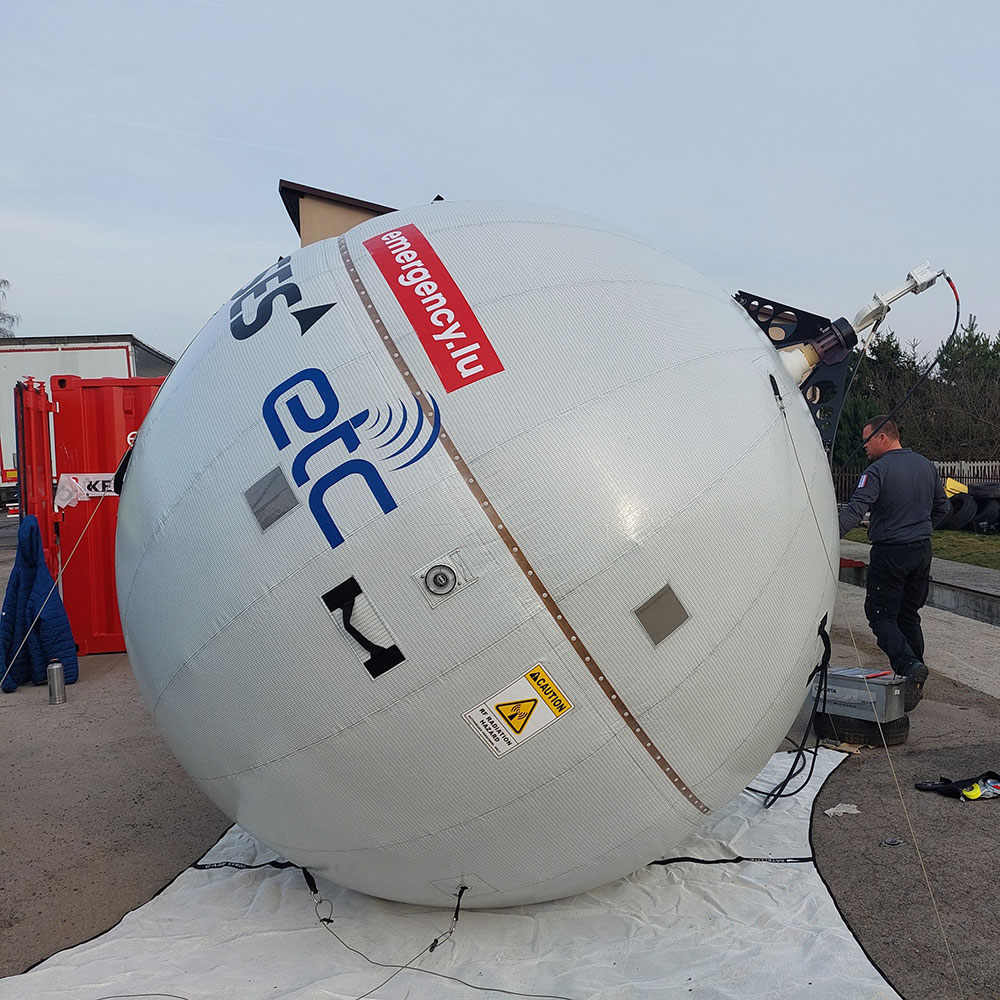
Imagine trying to deliver assistance without connectivity – no phone, internet or radio. Humanitarians wouldn’t be able to do it. Since 2021, WFP has installed independent, high-speed connectivity at over 99 percent of its locations worldwide, including in the deep field. This means humanitarians can continue to deliver faster and more effectively no matter what the challenge – including political instability, climate shocks or disasters that can cut off local networks. Additionally, in 2022, the WFP-led Emergency Telecommunications Cluster (ETC) provided connectivity for 313 partner organizations, enabling more than 9,000 humanitarians worldwide to work together seamlessly to respond to the most challenging emergencies. This included in Ukraine, where the ETC received a 97 percent satisfaction rate for its services.
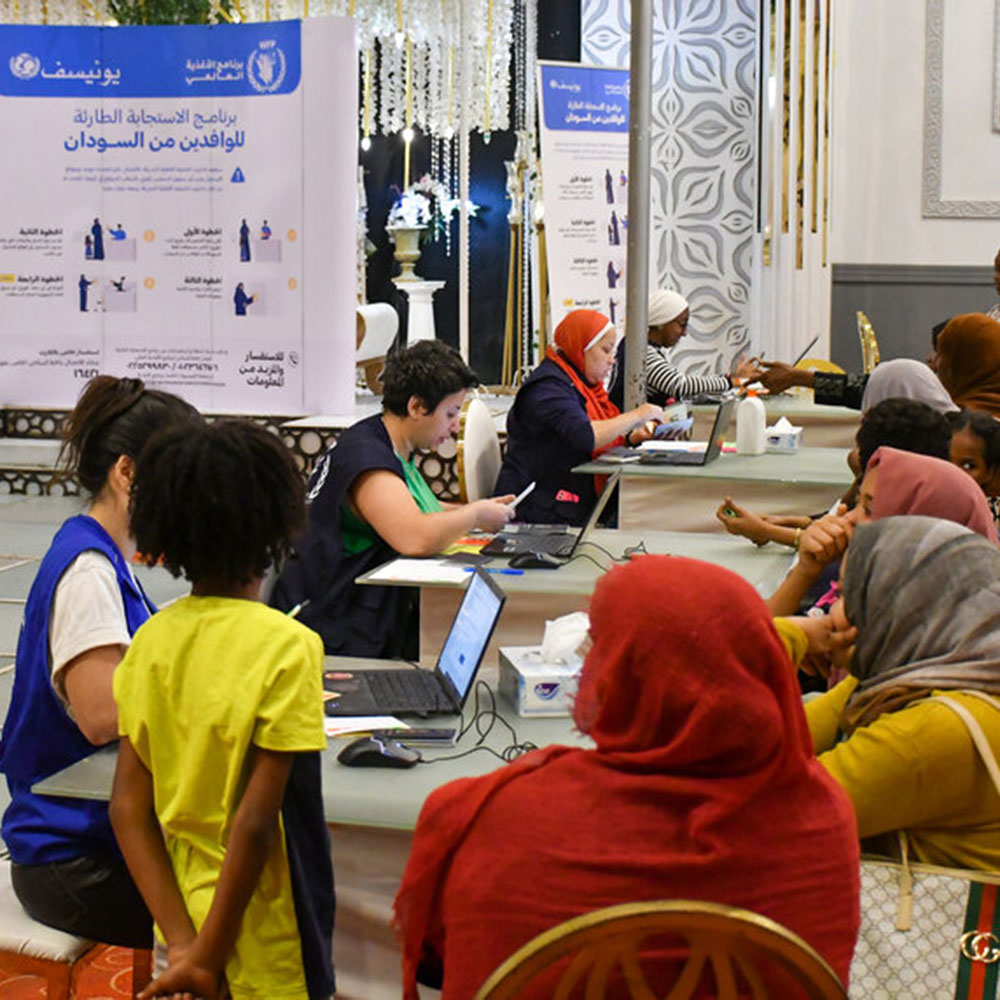
In Ukraine, WFP pioneered an online registration approach for families in need, who simply filled in a form and sent their information directly to WFP in order to receive money. WFP has adapted that tool to support refugee families fleeing Sudan for Egypt, where they can register and receive pre-paid cards in under three minutes to buy food at thousands of stores nationwide. The new approach does not require specialized hardware and can be set up within 48 hours or in anticipation of an emergency. It operates in real-time so that data is collected, duplicate identities are eliminated, and people receive assistance at incredible speed.
Watch the video
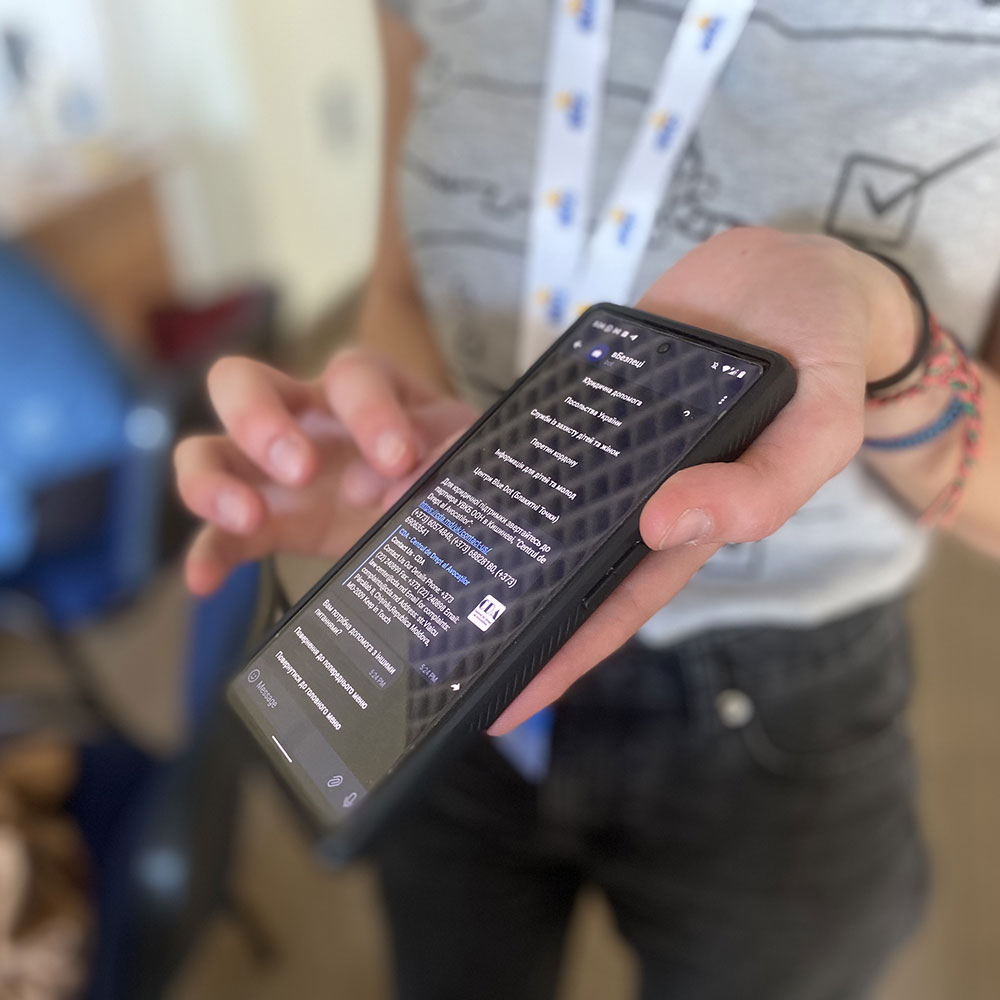
When crisis hits and communication goes down, every second can feel like an eternity. That’s true whether you’re an individual who’s been affected by disaster and are trying to contact loved ones, a humanitarian trying to organize rapid assistance, or a government trying to inform citizens. Recognizing that, the 31 global partners of the ETC are on hand to work with local partners and communities on the response. From restoring mobile networks and internet connectivity to getting local radio stations back on the air, they keep affected communities updated on the latest information and they keep humanitarians connected.
The ETC chatbot, for example, gives 24/7 access to information about humanitarian entitlements, for people in crisis. It has been launched in Libya, Iraq, Ecuador and Ukraine. Each chatbot is adapted to local circumstances and is available in local languages.
Watch the video
The exploration of AI applications at WFP has been guided by responsible, people-centered innovation practices, which we adhere to for all innovation explorations.
Learn more.
Watch this video and read this blog to learn more about applications of AI in WFP’s work.
To be effective, innovation and technology should allow the people we serve to unlock their true potential.
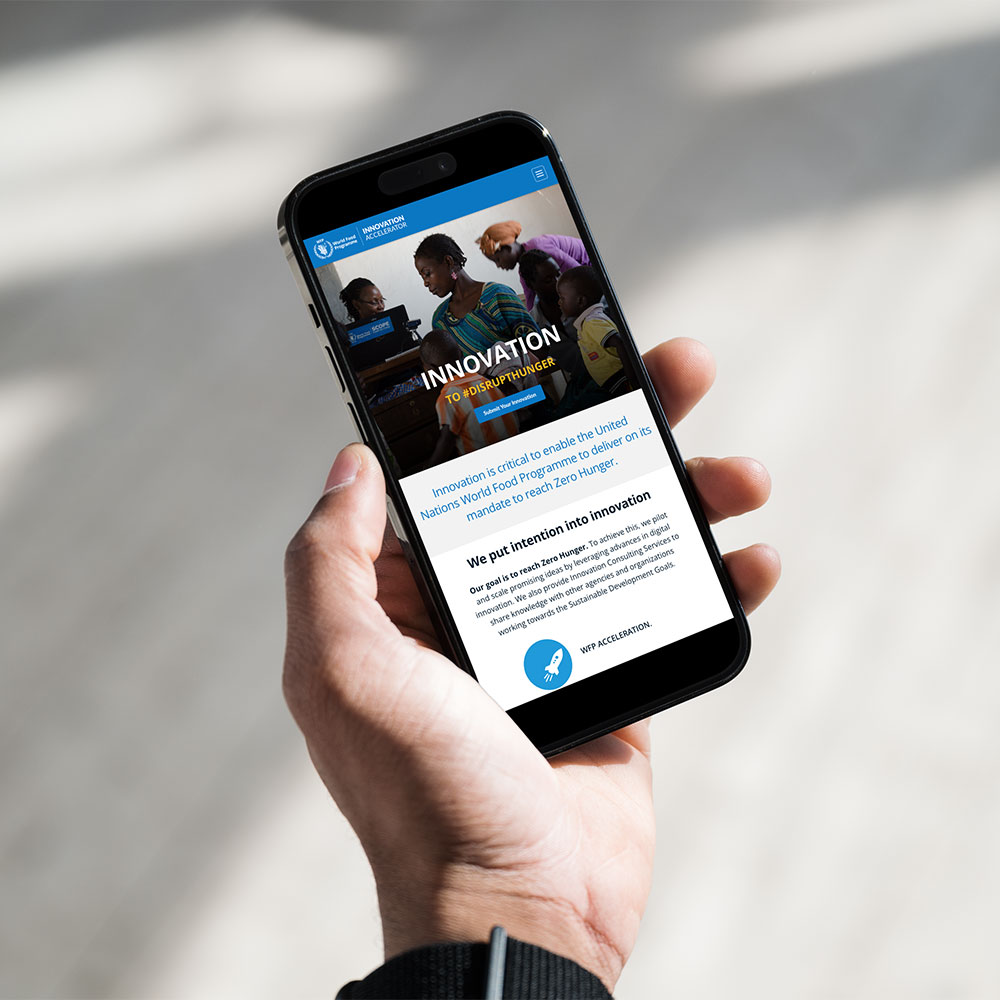
In 2015, the WFP Innovation Accelerator was launched to bolster WFP's emergency response globally by identifying, supporting, and scaling innovations. It's now the largest social impact startup accelerator, running 15 annual programs. With a portfolio of 150+ innovations, it positively impacted 37 million people in 2022, growing 2X every year since inception and securing over $200 million in grants.
Collaborating with the private sector, the WFP Innovation Accelerator propels social impact startups and companies. From tackling major pest threats with Toothpick to redistributing surplus food through Nilus and reducing carbon emissions with Takachar, these startups have revolutionized WFP's humanitarian operations.
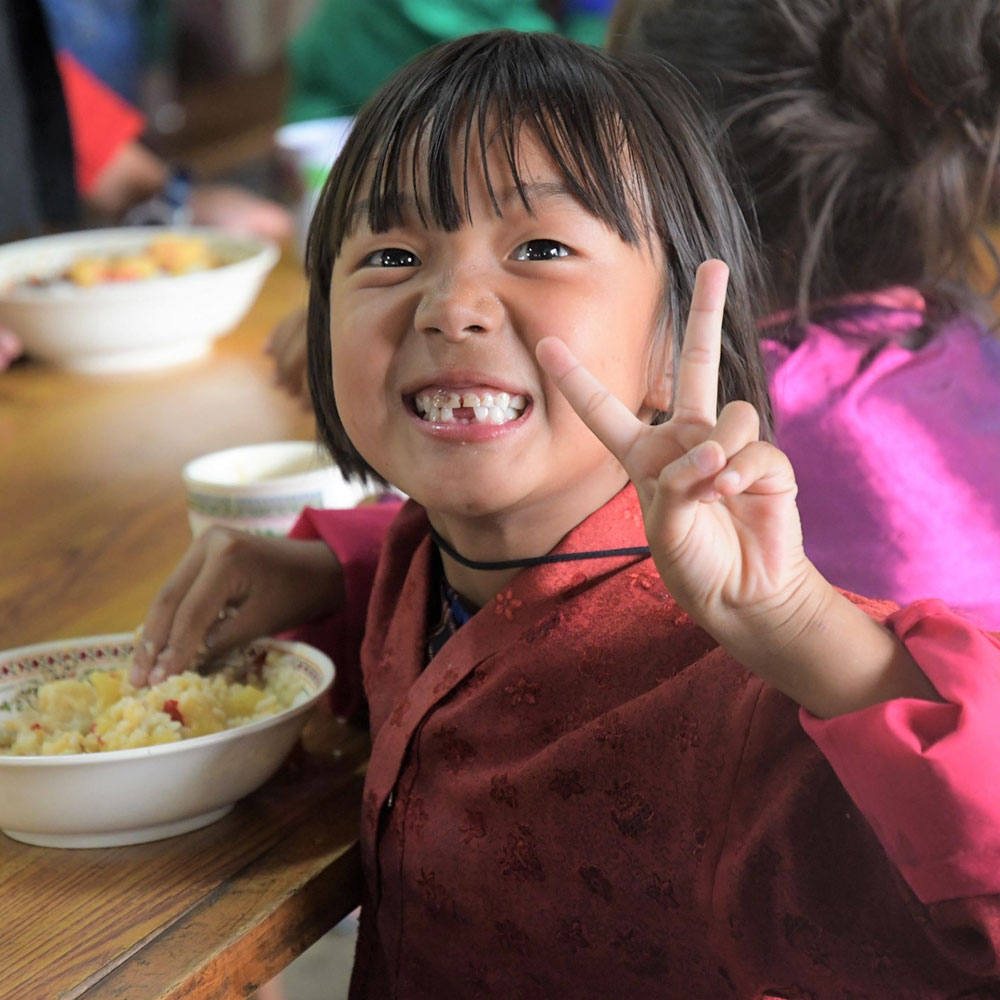
Innovations achieve their greatest impact when tapping into local knowledge and resources. Guided by this principle, WFP's School Meal Programme PLUS ( SMP PLUS) now serves over 3.4 million school children. Initiated in 2018, SMP PLUS is an AI-powered menu-optimization tool. It calculates and selects the most cost-effective meals for students worldwide, while respecting local eating habits. Thanks to its advanced algorithm, the result not only creates nutritional meals, but simultaneously ensures menu diversity and makes the most of local economies. The software has led to up to 15 percent cost savings in multi-million-dollar school meals programmes, and boosted local food procurement from smallholder farmers by 60 percent.
Smallholder farmers, essential for global food supply, grapple with challenges like resource scarcity and limited market access, affecting their income and productivity. To address these issues, the Farm to Market Alliance consortium, comprising public and private organizations, actively assists 2.45 million smallholder farmers. It leverages the resources and expertise of WFP, Alliance for a Green Revolution in Africa, Bayer, International Finance Corporation, Syngenta, Rabobank, Grow Africa, and Yara International, providing vital information, investments, and support.
Digital solutions like Farm2Go enhance WFP's smallholder agricultural market support programs. This mobile and web app connects farmers, aggregators, and local buyers, creating a digital marketplace that formalizes commodity purchase negotiations and improves transparency at every stage. This fosters trust within the smallholder farmer value chain.
Listen to the BBC podcast on the impact of Farm2Go
Watch the video
Young people affected by food insecurity in crises often see their education, careers, and dreams disrupted. Despite these challenges, many possess the potential and determination to secure a livelihood beyond food assistance. Recognizing this, WFP initiated the "Empowerment in Action" (EMPACT) innovation program in 2016. EMPACT harnesses individuals' inherent resources, such as skills, knowledge, and work capacity, enabling them to rebuild their lives regardless of external conditions. The program offers technical training to equip refugees and host communities with market-oriented digital skills, opening doors to online work opportunities and self-sufficiency for young people. In collaboration with tech firms and the private sector across multiple countries, EMPACT connects those at risk of hunger to the global digital economy. In Iraq, for example, the "Jousour" initiative, rooted in EMPACT, fosters digital skills, business English, financial inclusion, life skills, and entrepreneurship in collaboration with the government and private sector, positively impacting over 54,000 lives.
Watch the video
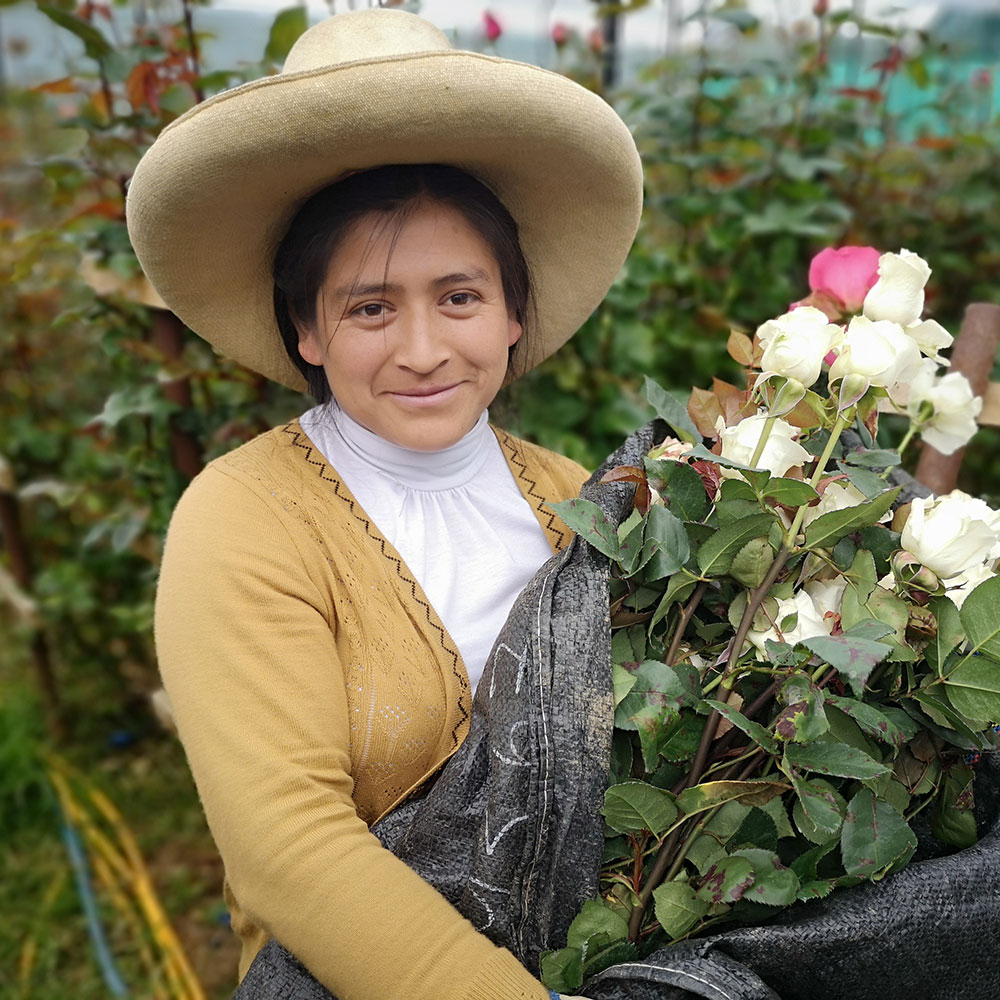
Rural smallholder farmers and micro-entrepreneurs in emerging markets frequently encounter financial exclusion, as they are often deemed high-risk borrowers. The lack of financial literacy exacerbates the problem, particularly among women, and deepens rural poverty. WFP’s SheCan initiative is a blended finance mechanism that combines humanitarian assistance with innovative financing approaches to provide affordable loans for smallholders. It collaborates with financial service providers to design more affordable loan products, linked to crowdlending platforms, philanthropists, and investors. SheCan also offers gender-sensitive financial training and digitizes service access for farmers. The initiative has been piloted in Malawi, Peru, Rwanda, and Zambia, with an impressive loan default rate of less than one percent and will soon be launched in Iraq.
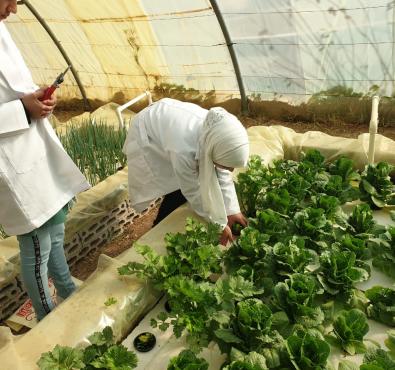
In places where water and land are scarce, local food production becomes a challenge. This is where WFP’s H2Grow initiative comes in, leveraging hydroponics—a soilless method that uses up to 90 percent less water than traditional farming. While the hydroponics technique is not new, H2Grow’s innovation lies in its low-tech strategy. We train communities facing food shortages to build their own hydroponic systems from local materials. Since its launch in 2016, H2Grow has scaled globally, helping people in deserts, refugee camps, schools, and informal urban settlements increase their access to fresh food. In Kenya, we are enhancing our strategy by providing communities with hydroponic units financed through a blend of loans and donor contributions, offering a self-sustaining model.
Farmers in Bangladesh can now get better prices for their goods with Farm2Go, helping them build economic resilience to climate shocks while fueling community development.
Farmers in Bangladesh can now get better prices for their goods with Farm2Go, helping them build economic resilience to climate shocks while fueling community development.
As the largest humanitarian organization in the world fighting hunger, WFP solves immense logistical puzzles every day. And it does this with a spirit of innovation and a curiosity for technology. Scaling up solutions to these puzzles enables WFP to serve more people, better.
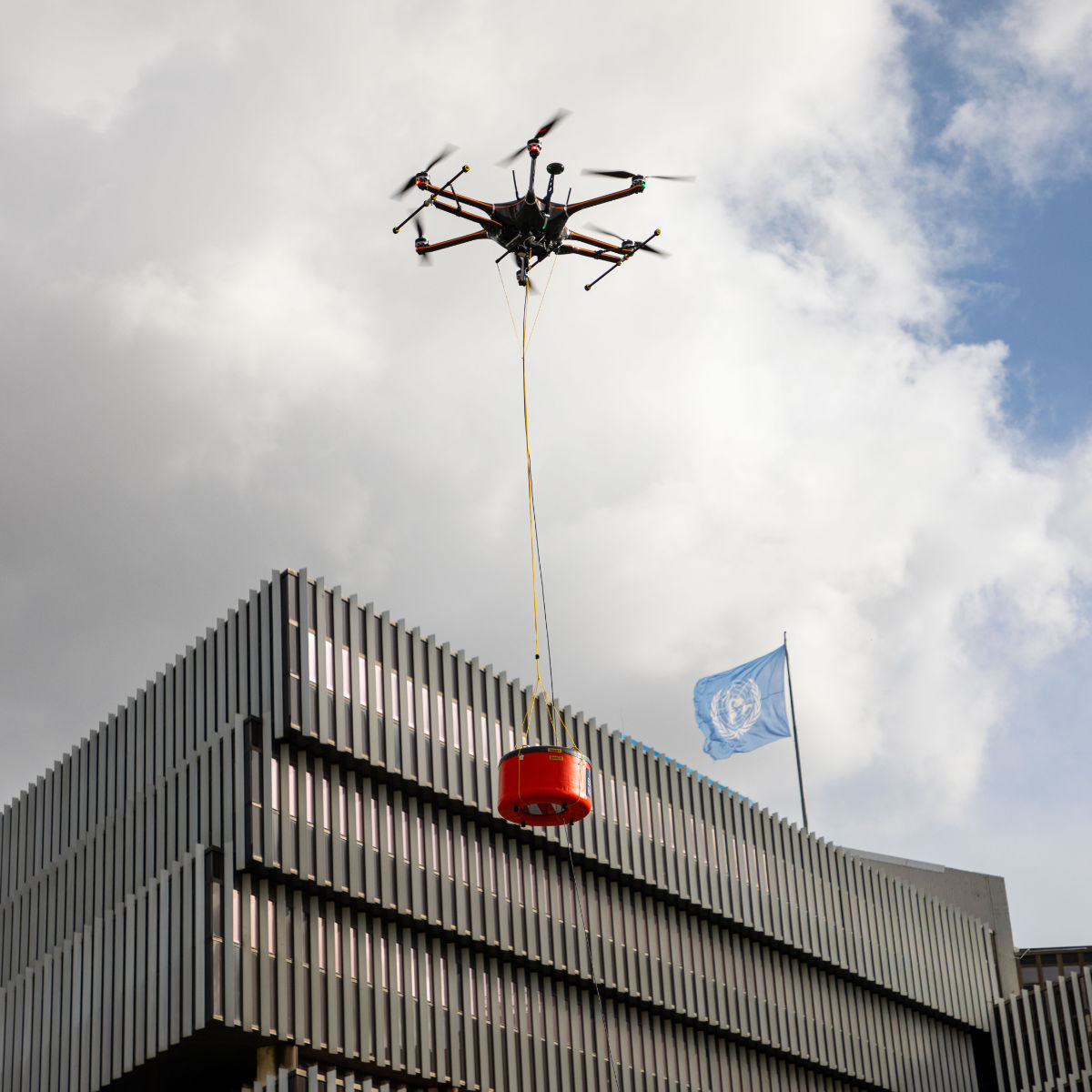
WFP is on the frontlines of humanity's most formidable challenges: conflict, food insecurity, the worsening effects of climate change, global health emergencies, and human displacement. To gain a better understanding of hunger in an ever-changing world, WFP has developed HungerMapLIVE, a global hunger monitoring system that utilizes data collected through a network of global call centers and artificial intelligence (AI). The platform covers 94 countries, including those where WFP has operations. HungerMapLIVE analyzes and visualizes metrics such as food security, nutrition, weather, hazards, conflicts, and population size, providing actionable information in near real-time to support the humanitarian community.
During crises, food insecurity and malnutrition risk grows exponentially, and safety and health risks are rife. Those most exposed include women and girls, those with the fewest resources, people with disabilities, and those living on the margins of society. People facing crisis need money to pay for not only food but also transportation, temporary accommodation to get out of harm’s way, as well as medical costs and education for their children. That’s why, through large-scale digital registries, WFP sends people money to give them the flexibility to choose what they need when they need it. Cash-based transfers now constitute 35 percent of all WFP assistance, making WFP the world’s largest provider of humanitarian cash. In 2022 alone, WFP sent US$3.3 billion to 56 million people in 72 countries.
Watch the video
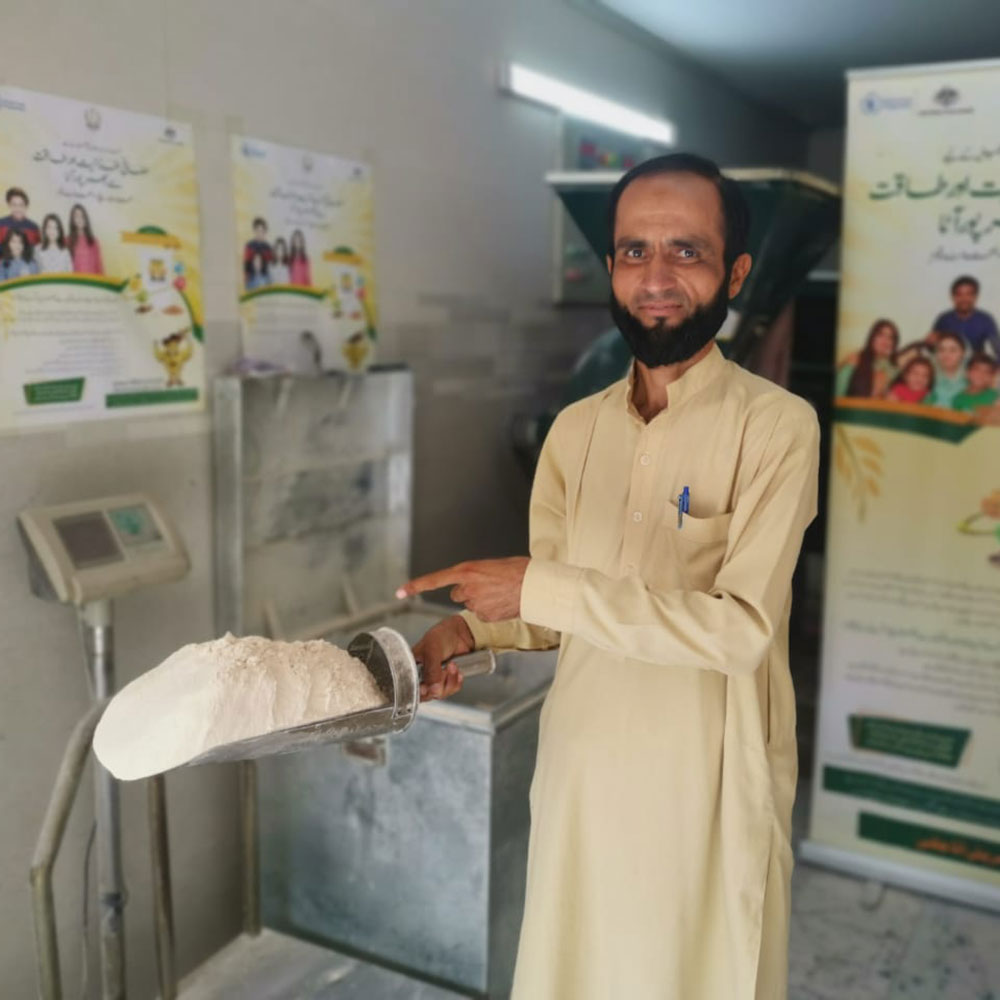
While staple foods are often fortified in large-scale systems, WFP's Chakki innovation project targets small-scale local mills where many purchase flour. This strategy has enhanced access to fortified wheat flour for nearly 70 percent of Pakistan’s population, essential for pregnant women, children, and adolescents. Chakki equips these millers, known as chakkis, with the skills, knowledge, and technology needed for fortification. It also bridges the gap between demand and supply, facilitating both business-to-business (B2B) and business-to-customer (B2C) market linkages. Through this approach, WFP has reached 2.2 million people with fortified flour through 55 small-scale mills.
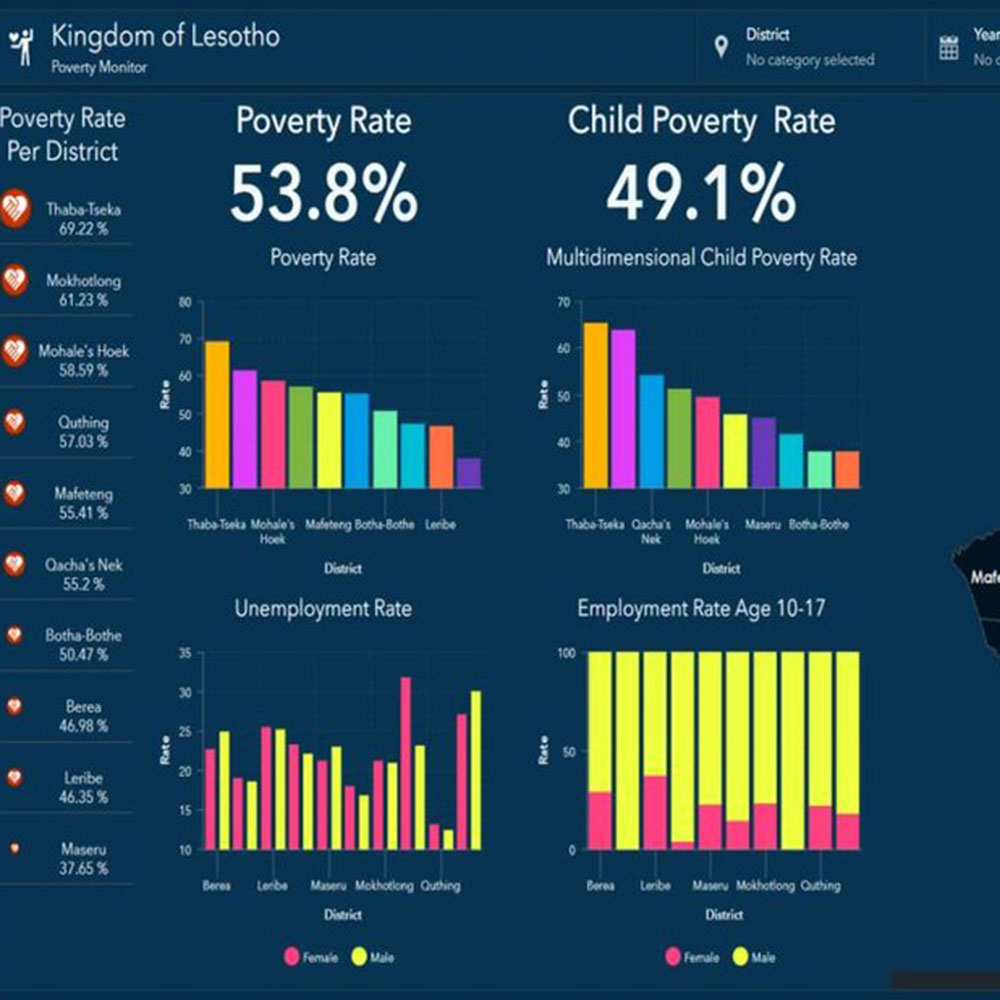
WFP’s experience in managing large digital registries and entitlement transfers puts it in a unique position to support governments set up social protection programmes. In the first six months of 2022, WFP supported 52 governments with the set-up or strengthening of their national government-to-person (G2P) payment systems, mostly through capacity building and technical advisory initiatives. A model being pioneered in Iraq uses open-source software to digitize the national public distribution system (PDS), the country’s biggest social safety net. Open-source solutions allow governments long-term self-sufficiency and independence from commercial licensing. By turning the solutions developed into digital public goods, WFP can effectively scale its support to governments and to the wider humanitarian community, thereby achieving even greater impact.
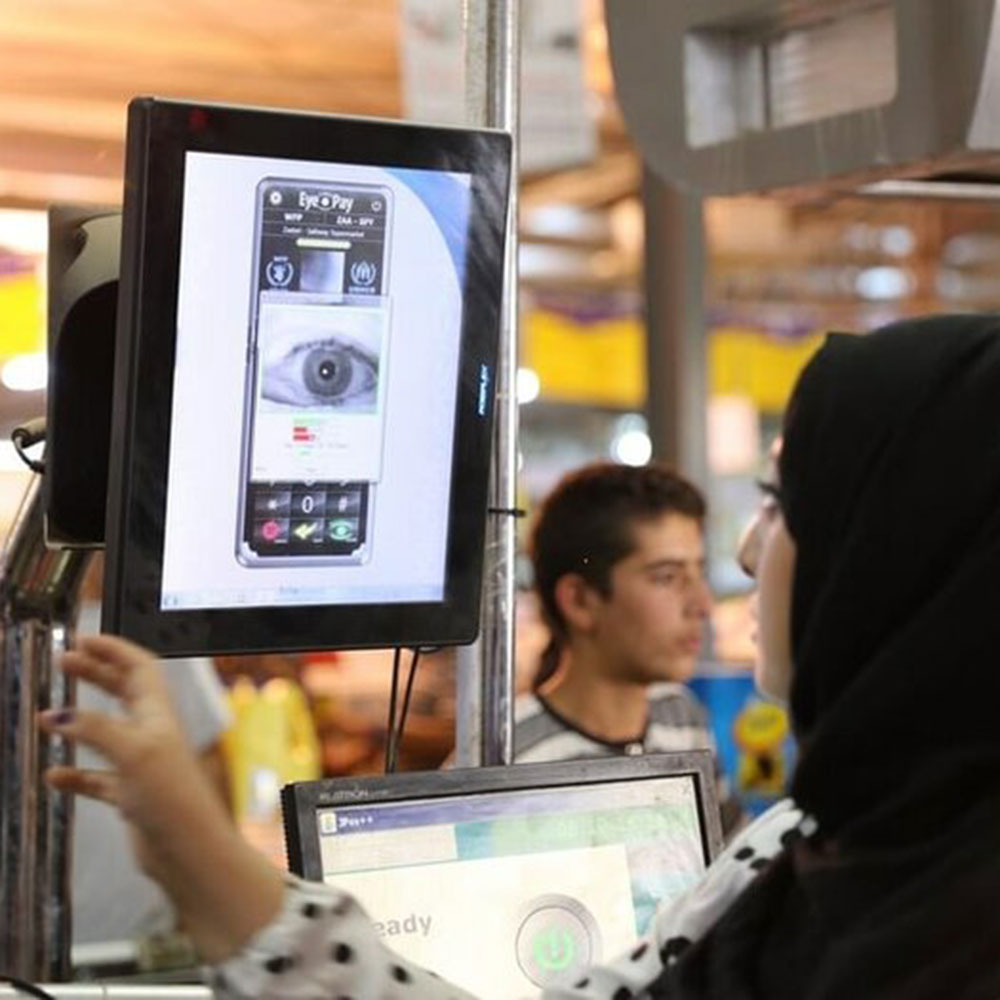
In today's complex humanitarian world, people in need often get help from multiple organizations. But without shared information on who's receiving aid and what kind they're getting, there can be too much or too little help.
Building Blocks (BB), the world's largest humanitarian application of blockchain technology. It revolutionizes collaboration among organizations, facilitating coordinated efforts and optimized resource utilization, allowing us to serve more people with greater effectiveness.
Under BB, individuals in need can access a range of aid from various organizations, be it cash, food, education, or healthcare.
To date, BB has processed $555 million in WFP cash-based interventions for food across 25 million transactions, saving $3.5 million in bank fees.
Watch the video
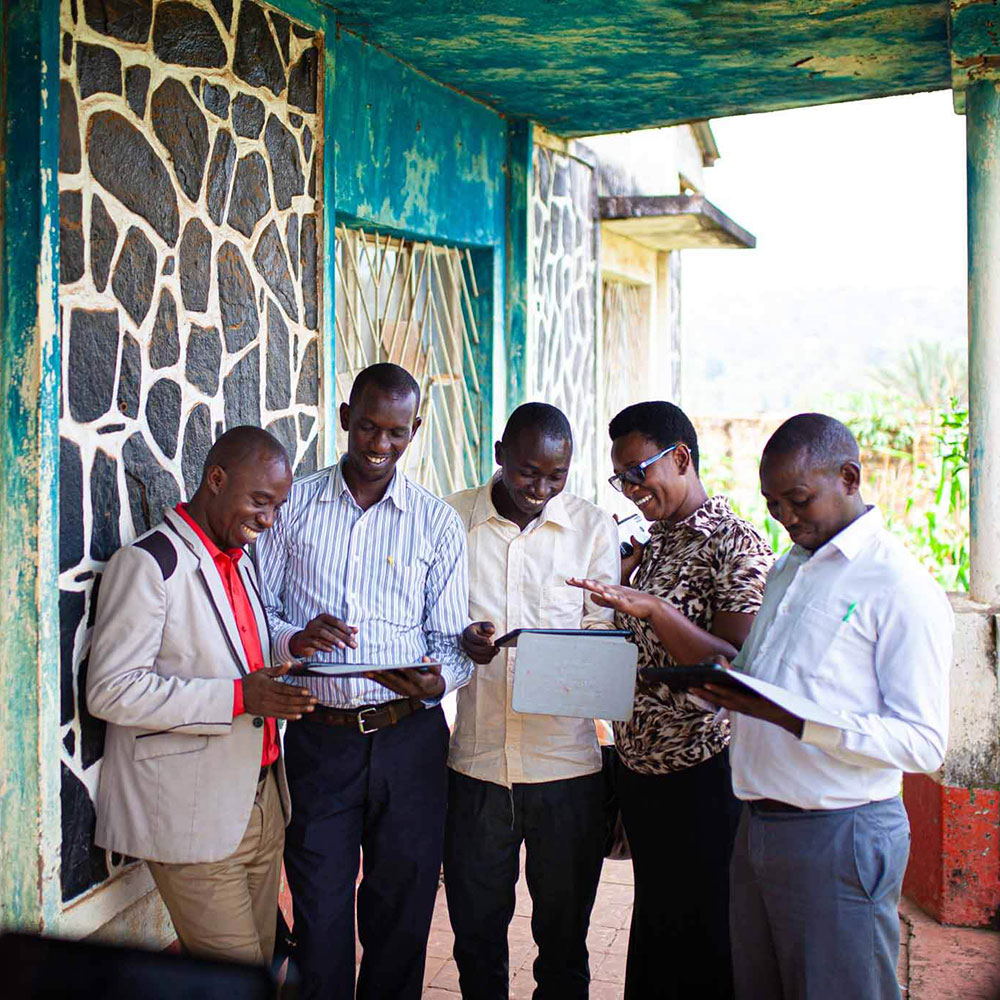
Celebrating 60+ years of experience, WFP partners with 100+ countries, aiding governments in building lasting national school meal and health programs. We aim for government ownership, achieved in 50 nations, promoting health, nutrition, and education.
With our expertise and private sector innovation, we revolutionize school feeding via the School Connect app. Digital tablets enable canteen staff to report attendance and meals, averting shortages. Over 600 schools in Eastern Africa, serving 450,000 children, benefit. Solar-powered tablets offer new opportunities for schools in low- and middle-income countries.
Download the app and share your first meal
Watch the video
WFP’s new cash policy centres on people’s experiences, their stories and hopes for the future, showcasing how cash transfers positively change people’s lives.
Read more
Great ideas often start small like a seed planted in a vast field, but they have the potential to sprout, flourish, and transform an entire landscape. Innovation and technology can breed solutions that change the entire humanitarian ecosystem, introducing choices to governments, communities and families where only barriers once existed.
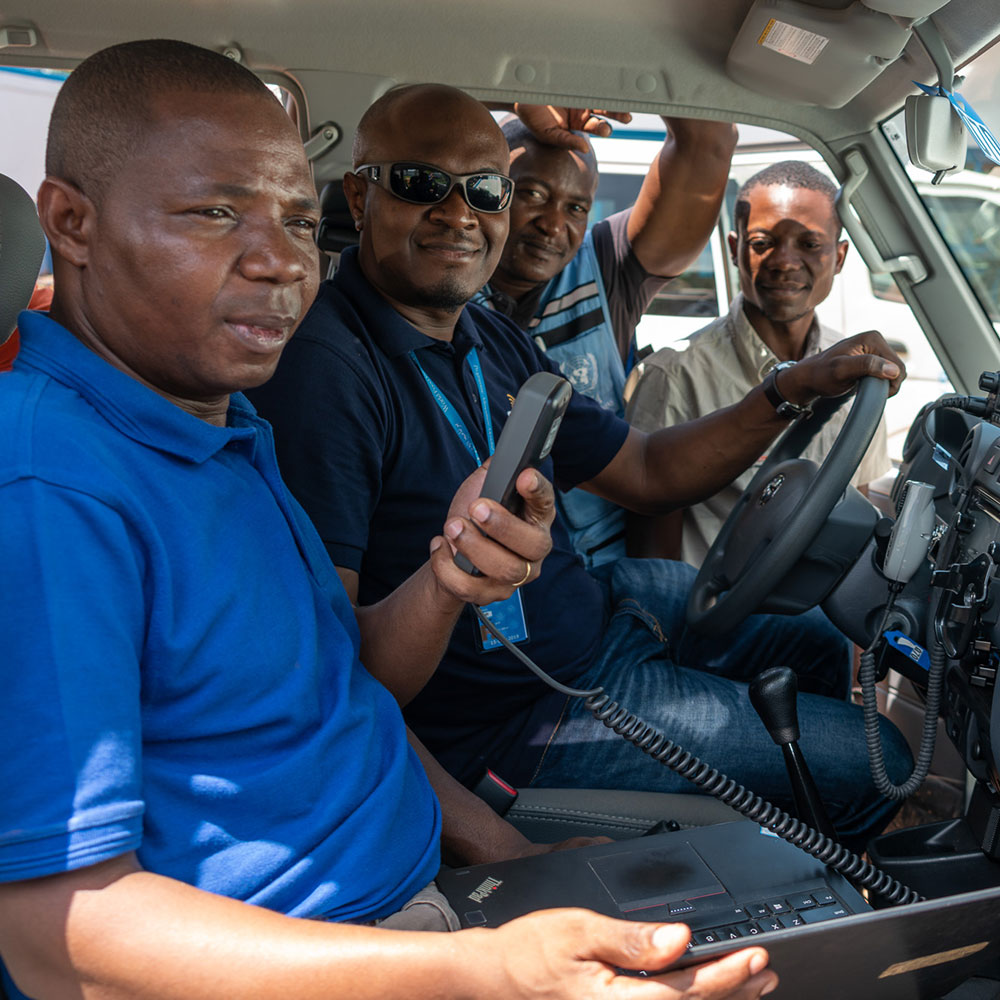
Digital technology – specifically mobile money services – has enabled WFP to become the world's largest humanitarian provider of cash assistance. Since 2020, support from the Global System for Mobile Communications Association (GSMA) has enabled WFP to access a greater number of mobile money services that facilitate cash assistance by working closely with regulatory authorities and local mobile network operators in key countries. Additionally, support from GSMA to the WFP-led Emergency Telecommunications Cluster (ETC) provides humanitarian partners greater visibility over local network coverage, helping emergency preparedness and response efforts.
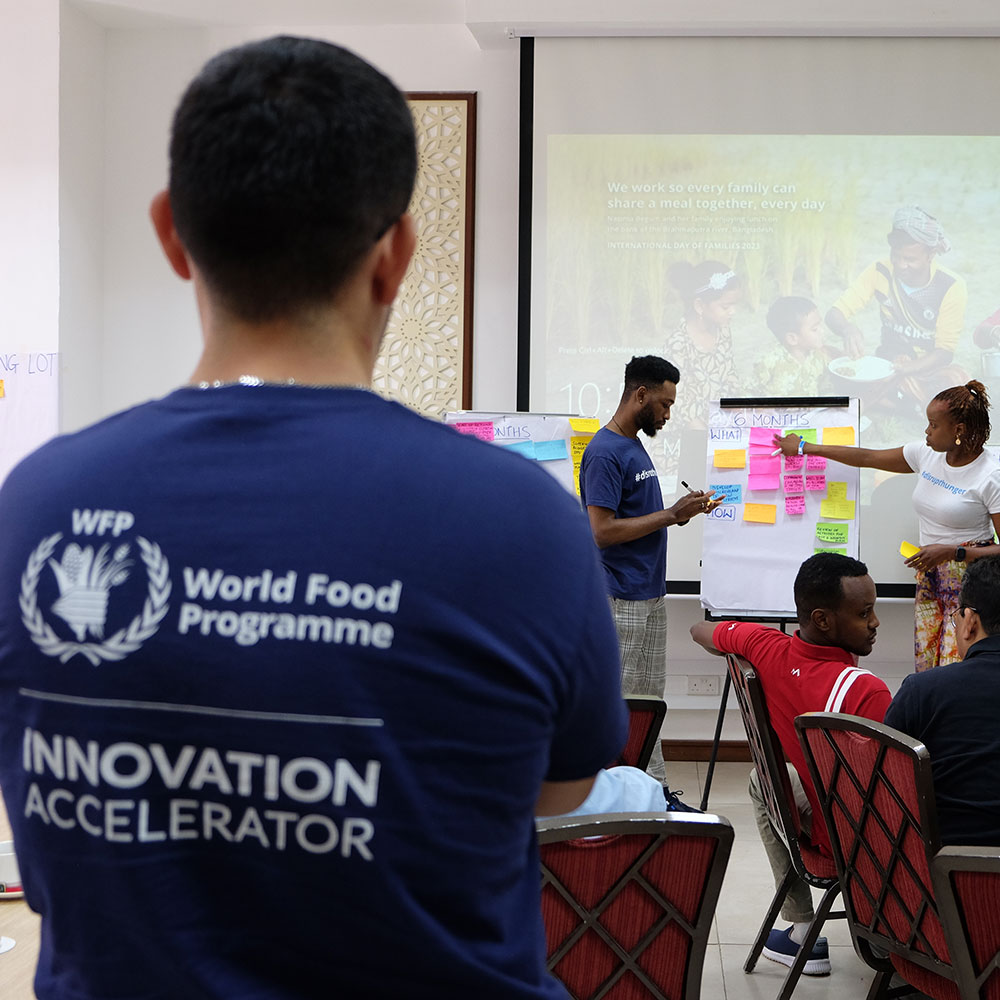
The 17 Sustainable Development Goals (SDGs) are all interconnected. Therefore, to deliver on WFP’s mandate to reach Zero Hunger and address challenges across a range of SDGs, the WFP Innovation Accelerator established its SDGx Acceleration unit in 2019. The team fosters global partnerships and works in collaboration with a broad range of partners and United Nations agencies to identify high-impact innovators addressing global challenges and connect them to the funding, knowledge, and networks they need to expand their impact. Through such partnerships, we have implemented 33 acceleration programmes, supporting a total of 291 ventures to implement innovation projects in 80 countries and drive impact across 11 different SDGs. Our custom acceleration programmes identify high-potential teams and support them to ideate, test, iterate and launch ground-breaking solutions in a way that is sustainable and grounded in sector experience.
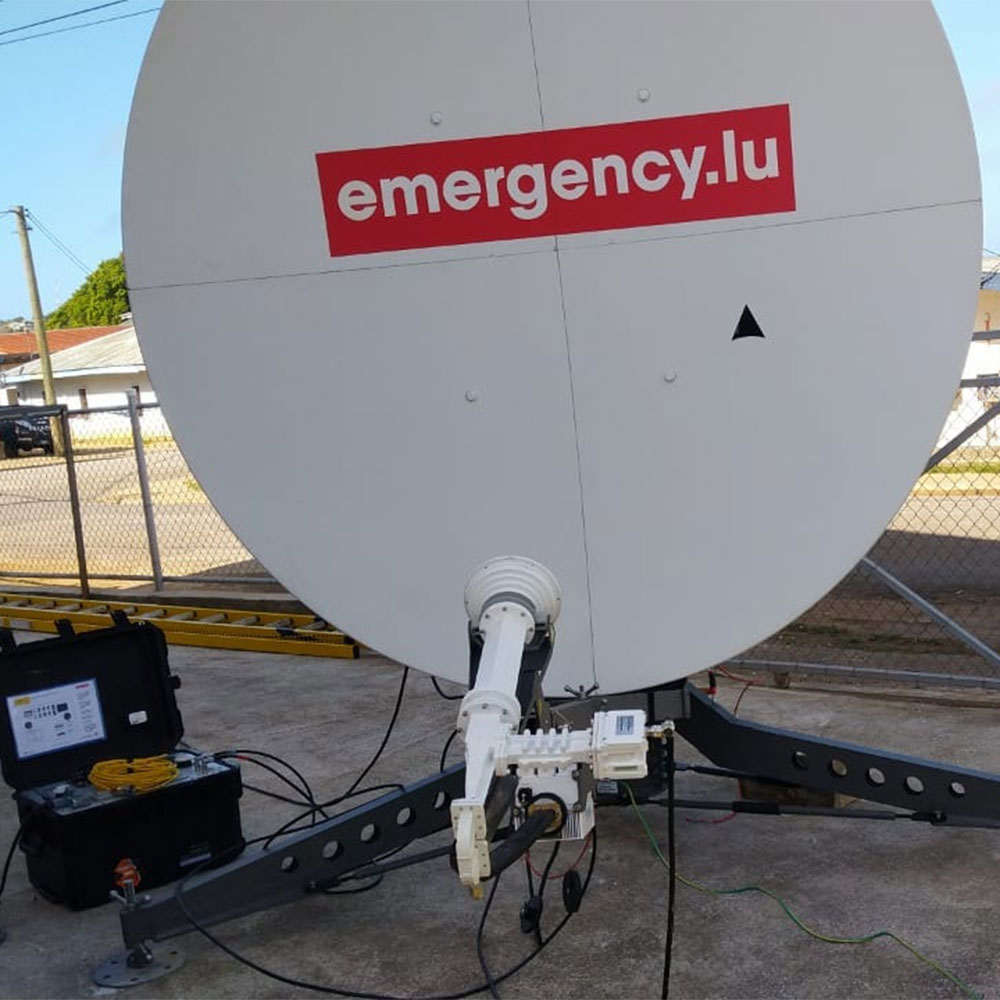
The Government of Luxembourg has been a long-standing partner of WFP and the Emergency Telecommunications Cluster since 2012, deploying the emergency.lu solution to keep humanitarians connected in areas with limited connectivity, both in sudden onset emergencies and protracted crises.
The Government of Luxembourg is also committed to strengthening the capacity of responders, through dedicated support to ETC training development and delivery, as well as providing connectivity to vulnerable communities caught amid crisis, so they can access life-saving information and contact loved ones.
In 2023, Luxembourg, in partnership with WFP’s Innovation Accelerator and the Austrian Development Cooperation, launched the Humanitarian Innovation Accelerator Programme, to support high-impact technology-powered solutions that strive to solve emergency and humanitarian challenges faced by vulnerable populations and humanitarian actors.
WFP grew from the idea that people with food in one country wanted to share it with people going hungry in another, building food security, stability and peace. Five years ago, that tradition got an update with the ShareTheMeal app, which lets a new generation share food with people in need. From just US$0.80, anyone can feed a child for a day through anything from school meals in the Republic of the Congo to food deliveries in Syria, while the ease and transparency of the app mean even the smallest donations add up to offer food security where it’s needed most.
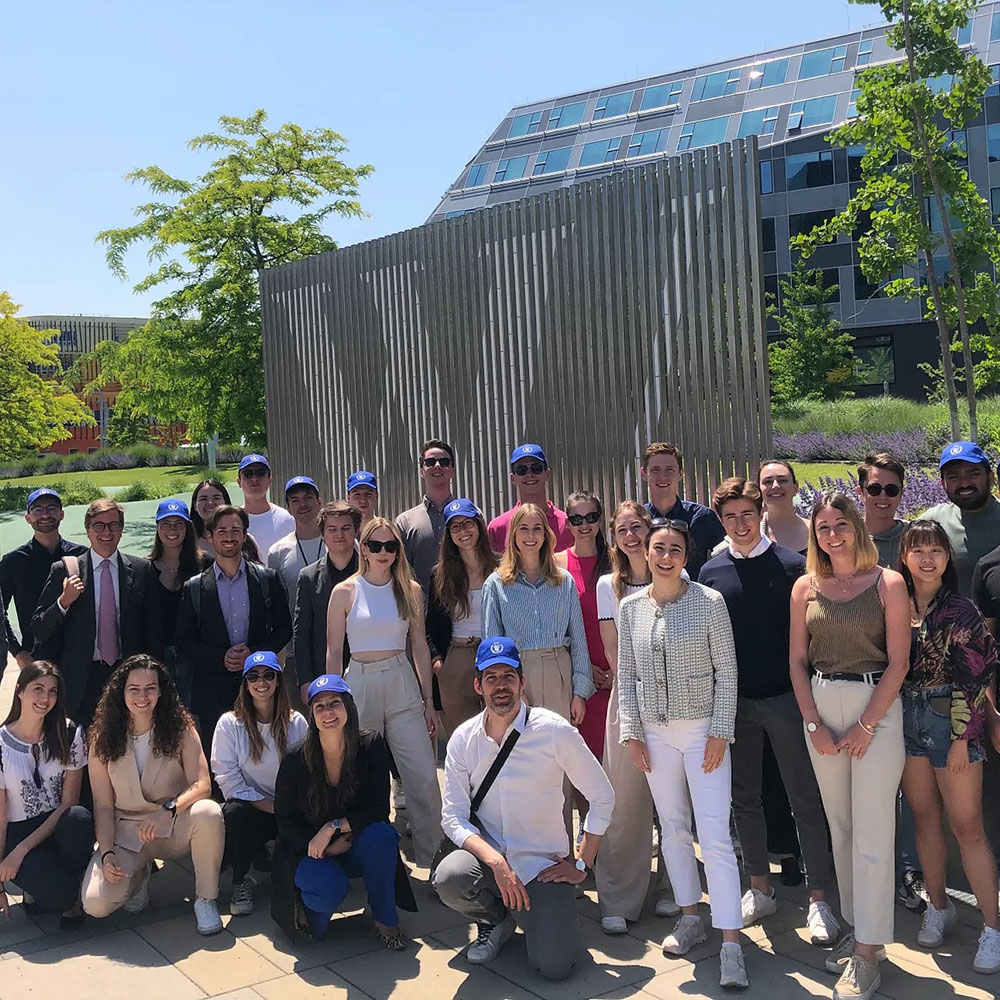
WFP has fostered a transformative partnership with Vienna University of Economics and Business (WU) that goes beyond traditional academic collaborations. At its core, this partnership embodies the true spirit of knowledge exchange and real-world problem-solving. Through collaborative work with professors and students, the two organizations partner to address knowledge management challenges in WFP. It serves as a compelling testament to the potential of academic institutions and organizations like WFP joining forces. Together, we aim to drive innovation, foster continuous learning, and, most importantly, make a meaningful impact on fighting hunger globally.
Learn more about the partnership
In 2017, Los Angeles-based couple Poonam and Nishkaam gave up throwing a lavish wedding to instead donate 40,000 meals to fight hunger. Their #MillionMealsforLove challenge in ShareTheMeal has raised almost 2 million meals, with over 12,700 supporters.
